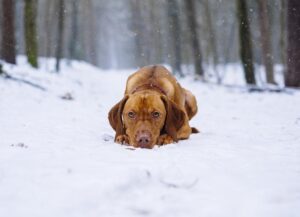Preventing Dog Hair Everywhere: Tips for Controlling Winter Shedding
As winter arrives, dog owners often find themselves battling with excessive shedding. The sight of dog hair covering floors, furniture, and clothing can be frustrating and time-consuming to deal with. However, there are several strategies and tips that can help control winter shedding and minimize the impact of dog hair on your home. In this article, we will explore the reasons behind increased shedding during the winter months and provide effective solutions to prevent dog hair from taking over.
Understanding Winter Shedding
To effectively tackle winter shedding, it is crucial to understand why dogs shed more during this time of the year. Shedding is a natural process that enables dogs to replace old or damaged fur with new growth. Dogs typically shed their old coat and grow a new one twice a year, once in the spring and again in the fall. However, factors such as changes in light, temperature, and seasonal variations can disrupt this natural cycle, leading to increased shedding during the winter.
During the colder months, many dog breeds grow a thicker undercoat to provide insulation and keep them warm. This undercoat is shed in the spring, making room for a lighter coat in the summer. Breeds with longer hair, such as Siberian Huskies or Border Collies, undergo this process more noticeably.
Tips for Controlling Winter Shedding
1. Regular grooming sessions: Regular grooming is key to preventing excessive shedding. Brushing your dog’s coat at least once a day can remove loose hair and prevent it from accumulating around your house. Use a grooming brush that is specifically designed to remove loose hair, such as a deseeding tool or a slicker brush. Brushing not only removes loose hair but also stimulates the production of natural oils in your dog’s skin, which promote healthy hair growth and minimize shedding.
2. Bathe your dog regularly: Bathing your dog regularly helps to remove loose hair and reduces the amount of shedding. Use a gentle dog shampoo that is designed to nourish the skin and improve coat health. Avoid over-bathing, as it can dry out the skin and cause more shedding. Consult with your veterinarian about how often you should bathe your dog, as it varies depending on the breed and their specific needs.
3. Provide a balanced diet: A proper diet plays a vital role in your dog’s overall health, including the condition of their coat. Make sure your dog is receiving a balanced and nutritious diet that meets their specific needs. A diet rich in high-quality proteins, vitamins, and fatty acids will promote healthy skin and fur. Consult with your veterinarian to determine the most suitable diet for your furry friend.
4. Supplement with omega-3 fatty acids: Omega-3 fatty acids, such as fish oil, are known to promote healthy skin and coat. Adding omega-3 supplements to your dog’s diet can help reduce shedding and maintain a shiny coat. Consult with your veterinarian to determine the appropriate dosage and type of supplement for your dog.
5. Control indoor humidity: Dry air can contribute to excessive shedding, as it dries out the skin and fur. Use a humidifier to add moisture to the indoor air during the winter months. Keeping the humidity level between 30% to 50% can help prevent dryness and reduce shedding. Additionally, providing your dog with plenty of fresh water and ensuring they stay hydrated helps maintain their skin’s moisture balance.
6. Regular exercise and mental stimulation: Regular exercise and mental stimulation are not only important for your dog’s overall well-being, but they can also contribute to a healthier coat. Physical activity helps improve blood circulation, which promotes healthy hair growth. Mental stimulation through interactive play or training sessions can also reduce stress levels, which is beneficial for minimizing shedding.
7. Vacuum and clean regularly: Despite your best efforts, some shedding is inevitable. To keep dog hair from accumulating throughout your home, make it a habit to vacuum and clean regularly. Use a vacuum cleaner specifically designed for pet hair. Additionally, consider using washable furniture covers or removable blankets on your couches and beds to protect them from hair and make cleaning easier.
8. Keep your dog’s bedding clean: Ensure your dog’s bedding is washed regularly to remove loose hair and prevent it from spreading around your home. Use pet-friendly detergents that are gentle on their skin to avoid any irritations or allergies.
9. Regular veterinary check-ups: Regular veterinary check-ups are essential to monitor your dog’s overall health, including any potential skin or coat issues. If you notice excessive shedding or any abnormalities in your dog’s coat, consult with your veterinarian to rule out any underlying medical conditions.
FAQs Section
Q1: How long does shedding last during winter?
A1: Shedding patterns can vary depending on the breed, but on average, winter shedding can last anywhere from a few weeks to several months. It typically starts in late fall or early winter as dogs prepare for the colder months.
Q2: Are there any specific breeds prone to excessive shedding during winter?
A2: Breeds with double coats or longer hair, such as German Shepherds, Golden Retrievers, Huskies, or Border Collies, are more prone to shedding during the winter due to their thick undercoats.
Q3: Can changes in diet help control shedding?
A3: Ensuring your dog has a balanced and nutritious diet can contribute to a healthier coat and minimize shedding. Diets rich in high-quality proteins, vitamins, and fatty acids are beneficial for your dog’s skin and fur health.
Q4: Can I shave my dog’s fur to minimize shedding during winter?
A4: It is generally not recommended to shave your dog’s fur during winter. A dog’s coat acts as insulation against the cold, and shaving it off can expose them to low temperatures and potentially lead to other health issues. However, regular grooming and brushing can help control shedding effectively without resorting to shaving.
Q5: Are there any health conditions that can cause excessive shedding in dogs?
A5: Excessive shedding can sometimes be a sign of an underlying health issue, such as allergies, hormonal imbalances, or skin infections. If you notice a sudden or excessive amount of shedding, it is advisable to seek veterinary attention to rule out any potential medical concerns.
Conclusion
While dealing with winter shedding might seem like an uphill battle, implementing these preventative measures can significantly reduce the amount of dog hair in your home. Regular grooming, providing a balanced diet, controlling indoor humidity, and maintaining your dog’s overall health are key steps to minimize shedding. Remember to consult with your veterinarian for personalized advice and to address any concerns about your dog’s shedding pattern. By following these tips, you can enjoy a cleaner and more hair-free living space while ensuring your furry friend remains healthy and comfortable throughout the winter season.

